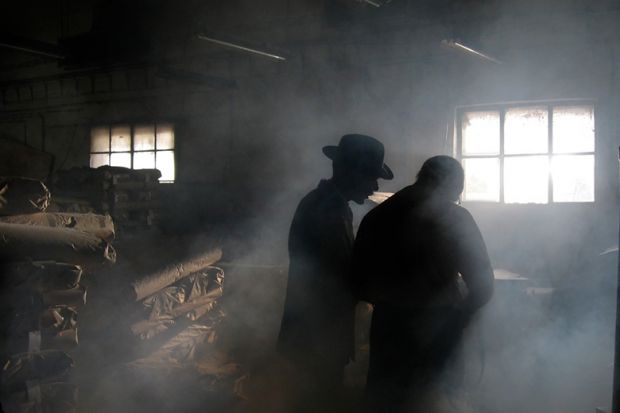Body parts flung from a moving train; a human heart left in a hatbox; a corpse doubled up in a spasm of final agony. Each of these horrors comes from a representative piece of interwar crime writing, and in each the flesh is quickly shrouded by the antiseptic deftness of their plots. For detective fiction always has at its core something horribly corporeal, and then (nearly always) proceeds to discreetly cloak it with the intricacies of intrigue. Yet such a strained relationship between human action, corpses and questions of representation has inevitably made a complex genre. Stewart’s rewarding and elegant study shows how fictional and non-fictional crime writing of the 1920s and 1930s is especially rich and strange, and why it justly deserves its rather too placid description as a “Golden Age”.
Stewart does two things very well – and one less foreseeable thing quite superbly. First, she sets golden age detective fiction within a continuum, one stretching back to Wilkie Collins’ The Moonstone, a book loved by both Dorothy L. Sayers and T. S. Eliot. The changing technology, and practices of detection, in the interwar period meant that different writers vied with each other either to modernise – as in the dissections of masculinity and motive we find in Elizabeth Bowen’s short stories – or to use geography (such as Agatha Christie marooning characters on an island) to make plots that were not subject to updated police procedures.
The other contextual feat of the book is to show how the fiction of the period was embroiled in labyrinthine snares and feedback loops with non-fictional works that detailed current court cases or gave histories of notorious trials. Partly this was due to writers needing inspiration – baroque blackmailers, apparently unsolvable crimes and hangings (as the ultimate finale) were all seemingly waiting to be edited – and yet also because writers are as subject to voyeurism as anyone else. F. Tennyson Jesse, a cataloguer of true-life crimes and one of Stewart’s great finds, declared that “it has been observed, with some truth, that everyone loves a good murder”. Perhaps the tension between the practices of newspapers around lurid real-life cases and the fictional possibilities is most directly acknowledged in Sayers’ Strong Poison . Here Harriet Vane’s defence costs are “being borne by her publishers and by a – well, a certain newspaper, which is running her new book as [a] serial. They expect a scoop out of all of this.” There really is nothing new under the Sun.
However, Stewart’s work is also ideological, as it is part of the recent surge of interest in 1930s culture. The reasons for this come from a desire to find historical models for the arts and political engagement; but also an intellectual interest in an expanded re-periodisation of those interwar years. This means now seeing the period not as defined by Modernism but rather as a “First Media Age”, or “mid-century”, or “the long-1930s”. In her deft analysis, Stewart shows why so much exhilarating writing is being rediscovered – and how it can be valued, and this includes works of grubby violence, glittering lustre and entrancingly elliptical forms. As a laconic chief inspector might well have commented: “Ah, first-rate detection.”
Leo Mellor is fellow in English at Murray Edwards College, University of Cambridge. He is currently working on a book titled The Long 1930s: Spaces and Places of British Literature, 1926-1952.
Crime Writing in Interwar Britain: Fact and Fiction in the Golden Age
By Victoria Stewart
Cambridge University Press, 216pp, £75.00
ISBN 9781316510001
Published 24 August 2017
POSTSCRIPT:
Print headline: Bringing up the bodies
Register to continue
Why register?
- Registration is free and only takes a moment
- Once registered, you can read 3 articles a month
- Sign up for our newsletter
Subscribe
Or subscribe for unlimited access to:
- Unlimited access to news, views, insights & reviews
- Digital editions
- Digital access to THE’s university and college rankings analysis
Already registered or a current subscriber?




